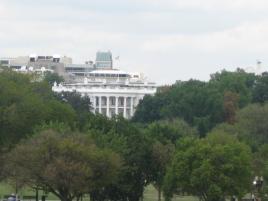Considering the Impact of the 10-for-1 Executive Order

While many grant applicants and recipients following the latest actions by the White House and the Department of Government Efficiency may have been focusing on major press-worthy issues such as an Office of Management and Budget (OMB) memo, now rescinded and temporarily halted under court order, to pause federal financial assistance, as well as attempts to shut down grantmaking agencies such as the U.S. Agency for International Development and the Department of Education, they may not be aware of another executive order signed by President Trump that will likely have a major impact on federal rulemaking, including rules designed to provide guidance and direction for federal awards.
The president last week issued an executive order (EO) entitled “Unleashing Prosperity through Deregulation,” as well as a fact sheet that provides information on the key measures under the EO. The EO requires that whenever an agency promulgates a new rule, regulation or guidance, it must identify at least 10 existing rules, regulations or guidance documents to be repealed. Further, OMB will ensure standardized measurement and estimation of regulatory costs — requiring agencies to reduce incremental costs within their Unified Regulatory Agenda — and that for fiscal year 2025, the total incremental cost of all new regulations, including repealed regulations, be “significantly less than zero.” Any new incremental costs associated with new regulations shall, to the extent permitted by law, be offset by the elimination of existing costs associated with at least 10 prior regulations.
The EO is a five-fold increased version of Executive Order 13,771, Reducing Regulation and Controlling Regulatory Costs, which Trump issued during his first administration, and which required agencies to eliminate two rules or guidance documents for every new “significant regulatory action” added, and called for a net-zero regulatory budget. The recent fact sheet contends that the 2-for-1 goal was achieved and “eliminated five-and-a-half regulations for everyone new regulation issued” and that the new EO will “improve daily lives of the American people by reducing unnecessary, burdensome and costly federal regulations.”
Within his first days in office, the Biden Administration repealed EO 13771, which some officials at the time saying that doing so would “provide needed clarity to those seeking additional guidance” by “restoring order to established government norms.” The Trump administration is now taking extreme measures to again boost deregulation. The new EO also includes the revocation of Nov. 9, 2023, version of OMB Circular No. A-4 and all accompanying appendices, guidelines and documents, and the reinstallation of the prior version of Circular A-4, issued on Sept. 17, 2003.
However, it should be noted that most existing regulations are required by federal statutes. Take, for example, the Department of Transportation’s Transit Assess Management regulations at 49 C.F.R. Part 625, which carry out the mandate under 49 U.S.C. 5326 to monitor and manage public transportation capital assets to enhance safety, reduce maintenance costs, increase reliability and improve performance. Agency efforts to determine which regulations to eliminate, when many are mandated by law, when proposing a new rule may prove extremely challenging, to say the least.
There's also is an issue of timing, which will be determined by the OMB director. In another EO, the Trump administration postponed the effective date of rules that were awaiting implementation for further public comment and review. Are these subject to the 10-for-1 requirement? For example, the Department of Energy (DOE) recently postponed the effective dates for three Energy Conservation Program final rules involving the testing of general service lamps, central air conditioners and heat pumps, and commercial clothes washers and dryers. If the 10-for-1 EO is deemed applicable, DOE would be required to eliminate 30 — 30! — regulations just to implement these three testing requirements.
To ensure compliance with often confusing grant regulations, recipients of federal financial assistance often find agency regulations and guidance helpful in managing their programs. It will be interesting to see how this White House directive will impact recipients and subrecipients already confused and under stress as to the future of their programs.
(Editor's note: Thompson Grants has launched a new "Trump Administration Actions Affecting Grants" roundup containing links to executive orders, fact sheets and other White House actions that impact federal fiancial assistance.)
Join us for our following Thompson Grants event:
2025 Thompson Grants Workshop: Indirect Costs | March 25, 2025 | Virtual Event



